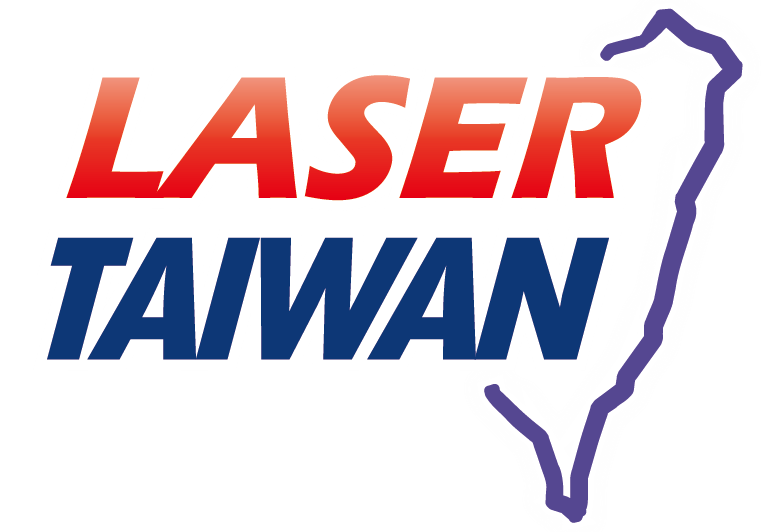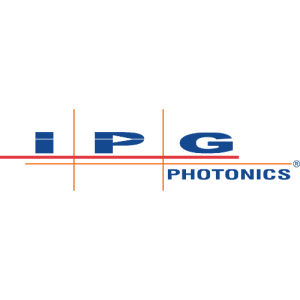
At IPG Photonics, some of the most common questions we get from people investigating our LightWELD® technology center around cost, safety, and applicability. Let’s take a closer look at these aspects of laser welding to understand how handheld laser welding fits into manufacturing and fabrication today.
Understanding Handheld Laser Welding
First, let’s back up and explain the basics of handheld laser welding. In many ways it’s analogous to arc welding except that it uses laser light to heat the workpiece rather than electricity.
Just like with arc welding, the operator holds the torch in close contact with the part and moves it along the weld seam. Laser welding can operate either with or without filler. When filler is used, the wire is supplied from a spool and fed in via the torch. In this way, it’s much like MIG welding. Similarly, shield gas is supplied from a nozzle built into the torch. These similarities in operation are part of the reason why it’s so easy for arc welders to adapt to this new tool.
The real differences in handheld laser welding derive from the characteristics of the light and the way it interacts with materials. One key distinction is that the laser light is focused into a very small spot on the base metal – smaller than the diameter of a human hair. Concentrating as much as 2 kW of light into such a small area produces intense and highly localized heating – typically covering an area of less than 0.04". In contrast, the area heated using various arc welding techniques ranges anywhere from 0.08" to 0.8".
The most important consequences of welding with this small, highly concentrated light beam are:
Faster welding speed: The intense, focused laser beam melts material rapidly, allowing for travel speeds that are as much as four times faster than welding methods like TIG.
Improved precision & aesthetics: Laser welding produces a small, controlled melt pool yielding leaner, more precise welds with minimal spatter. This often makes post-weld finishing, such as grinding or polishing, unnecessary.
Deeper penetration with lower heat input: Laser welding can achieve deep, high aspect ratio welds with a lower overall heat input compared to arc welding. This is beneficial for joining high-strength and heat-sensitive materials like stainless steel and aluminum.
Better performance on thin & reflective metals: Laser welding works well with thin and reflective metals like aluminum, stainless steel, and copper. The small, focused beam allows for controlled melting of thin substrates with minimal distortion.
Reduced consumables & filler material: Many laser welding applications require no filler wire. When wire is used, it is typically in a 1:1 ratio (one inch of wire for one inch of welding). Additionally, laser welding requires lower volumes of shielding gas.
With this understanding of the main properties of handheld laser welding, let’s dive into cost, safety, and applications.
Safety
The good news is that handheld laser welding is just as safe as arc welding and can be performed in almost any shop environment. The “catch” is that it requires different safety precautions than arc welding, so, you can’t simply continue using (all of) the same Personal Protective Equipment (PPE) and safety barriers as before.
The primary hazard in handheld laser welding comes from infrared laser light reflected back from the base metal. It’s possible for this light to be intense enough to cause eye damage or skin burns. But because this infrared light is invisible, the danger can’t be detected until the damage has already occurred.
The obvious takeaway from this is that it’s critical to prevent direct exposure of the eyes or skin to reflected laser light. In terms of PPE, this means two things. First, handheld laser welding shouldn’t be performed using a traditional welder’s helmet. It’s necessary to use a laser welding helmet with filters that block infrared wavelengths. A laser welding helmet contains these in addition to the filters normally used for blocking ultraviolet and broadband infrared light.
Second, at IPG Photonics, we recommend that the welder also wear laser safety glasses that also block just the laser’s wavelength under their welding helmet. These same glasses should be worn by anyone else in proximity to the welding process.
The other protective gear for laser welding is largely the same as for arc welding, and includes leather gloves, long sleeves or a jacket, long pants, and boots. It’s important to realize that while laser welding typically appears “tame” compared to arc welding, there is still a chance of flying spatter.
To prevent others in the shop from being exposed to laser light, laser welding should always be performed in an area with controlled access. Ideally this is an enclosure with laser-safe walls and a door with a safety interlock (that shuts the laser down when it is opened). But the enclosure can also be curtains if they are specifically designed for laser welding.
LightWELD in particular incorporates several unique features to enhance safety. These include an interlock that only allows the laser to fire while the nozzle is in contact with the part. LightWELD also uses a sensor that shuts the laser off if no weld plume is detected. Plus, the torch itself has two triggers to preclude unintentional firing.
Cost
Handheld laser welders virtually always cost more to purchase than any form of equivalent arc welding equipment. But, for a variety of reasons, laser welding can deliver substantial savings in the long run.
First, handheld laser welding is many times faster than traditional welding. This helps reduce labor costs and overall production time. Furthermore, the operator skill level and training required to produce high quality welds is significantly relaxed.
In addition, laser welding delivers clean, precise welds which reduce the time spent on part pre-cleaning and post processing. In contrast, arc welding produces spatter and slag that can require cleaning, grinding, or polishing.
Applications
While handheld laser welding improves efficiency and weld quality, it does not entirely replace arc welding. Instead, it supplements traditional welding methods by excelling in thinner metals, high-precision welds, and applications requiring minimal post-processing. Some of the applications that benefit most from handheld laser welding include:
Sheet metal fabrication: Stainless steel, aluminum, and galvanized steel for appliances, enclosures, cabinets, and panels.
Automotive & aerospace production and repair: Clean, strong welds on body panels, exhaust systems, and precision components.
Manufacturing & industrial equipment: Fast, high-quality welds on machine frames, brackets, and small assemblies.
Medical & electronics: Fine, precise welds on delicate components like medical devices and battery enclosures.
Custom metalwork & artistic applications: Decorative metalwork, jewelry, and sculptures due to clean welds and minimal distortion.
LightWELD: Innovation, Support, and Performance
For those looking to increase efficiency, improve quality, and reduce labor costs, LightWELD from offers a proven solution that is designed and manufactured in the USA. LightWELD is backed by readily available service – both in the USA and worldwide – as well as extensive operator training and applications development support. IPG Photonics, the pioneer and global leader in fiber laser technology, has dedicated extensive resources to making LightWELD the industry leader in quality, performance, safety, and value. This ensures that businesses can adopt handheld laser welding with confidence and maximize its incredible benefits
更多參展商新聞稿
| 2025-08-28 |
雷射之後,交給我們—金屬沖壓零件量產的專業夥伴福潮記
福潮記工業股份有限公司
|
| 2025-08-28 |
精密沖壓遇上雷射製程,福潮記金屬沖壓零件升級製造效能
福潮記工業股份有限公司
|
| 2025-08-28 |
福潮記精密沖壓職人技術,為雷射加工產線打下完美收尾
福潮記工業股份有限公司
|
| 2025-08-22 |
SPiDER EXTRUSION 蜘蛛擠出 讓「塑膠押出成型」變簡單
通產工業有限公司
|
| 2025-08-22 |
Fluence Technology Launches New Product
維佳科技股份有限公司
|
| 2025-08-21 |
看見不被看見的細節—維勳專研精密微小螺絲
維勳螺絲股份有限公司
|
| 2025-08-21 |
東南銘版自動化展熱烈展出中!!
東南銘版有限公司
|
| 2025-08-21 |
就是明天!人生不只贏得比賽,更要一起完賽!東南銘版助您完美達陣!
東南銘版有限公司
|
| 2025-08-21 |
蜘蛛擠出SPiDER EXTRUSION 誠邀您共襄盛舉 2025 台北自動化展
通產工業有限公司
|
| 2025-08-21 |
蜘蛛擠出SPiDER EXTRUSION尋找全球經銷商與合作夥伴,共拓押出應用市場
通產工業有限公司
|
| 2025-08-15 |
強化服務力 × 技術力 × 市場力 烜翊電機全面升級三大營運動能
烜翊電機企業有限公司
|
| 2025-08-15 |
從製造走向整合 烜翊電機邁向電力系統整合新紀元
烜翊電機企業有限公司
|
| 2025-08-15 |
精穩科技聚焦射頻連接與隔離技術,打造通訊零組件最佳解決方案
精穩科技股份有限公司
|
| 2025-08-15 |
精穩科技專攻高頻連接技術,服務5G、IoT與測試設備領域
精穩科技股份有限公司
|
| 2025-08-15 |
精穩科技展出客製化射頻零組件,打造一站式製造整合服務
精穩科技股份有限公司
|
| 2025-08-11 |
Luxinar 和 Iradion 在2025年台灣國際雷射展上推出組合產品系列
洋森科技有限公司
|
| 2025-08-11 |
Luxinar 和 Iradion 在2025年台灣國際雷射展上推出組合產品系列
LUXINAR LTD.
|
| 2025-08-08 |
科藝儀器@2025台灣國際雷射展 - 攤位號碼: P302
科藝儀器有限公司
|
| 2025-07-31 |
Winbro之雷射與放電加工技術助力航空航太、半導體、醫療、能源和汽車產業
英商英博集團技術有限公司
|
| 2025-07-23 |
光纖雷射 --全新的加熱,乾燥以及固化的解決方案
香港商亞洲阿帕奇雷射股份有限公司台灣分公司
|


 立即詢問
立即詢問